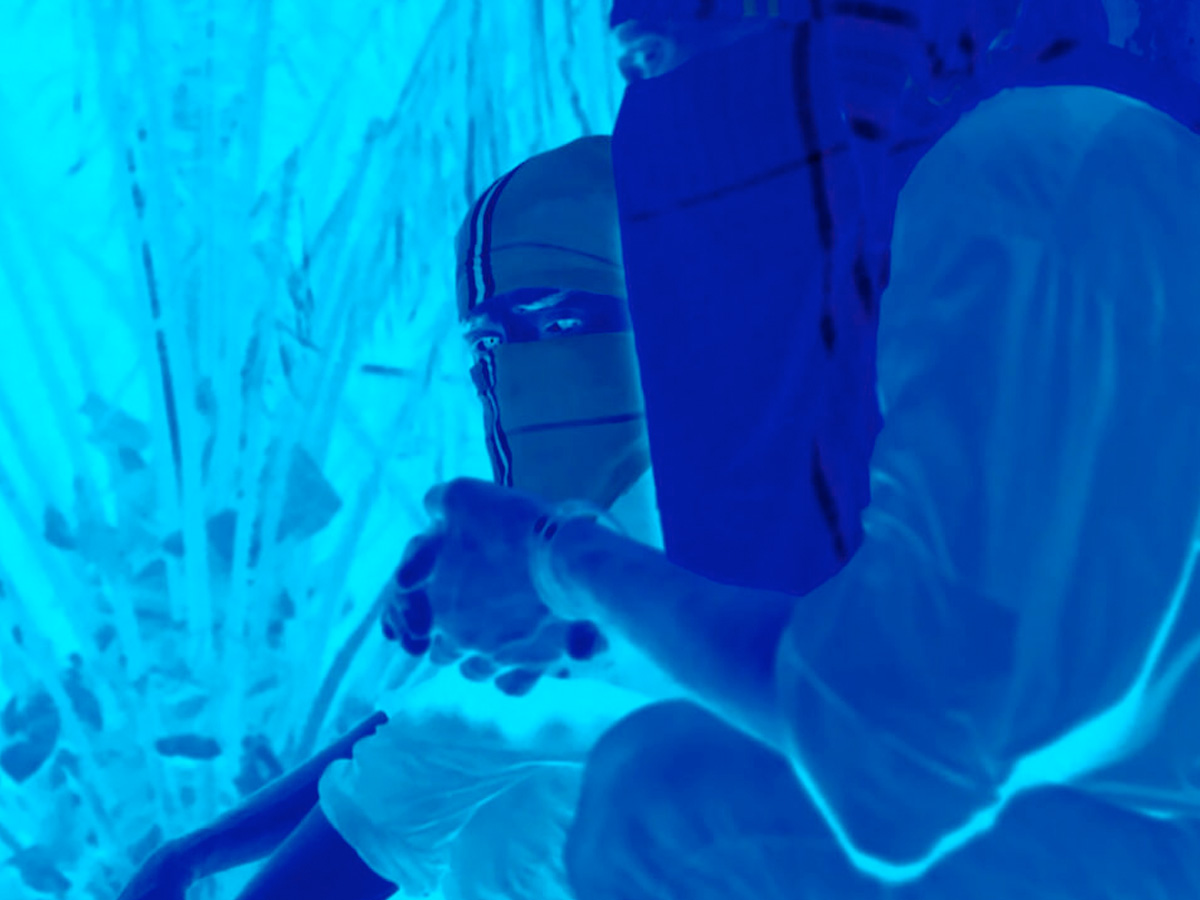
Why So Serious?!
On Omar Chowdhury’s BAN♡ITS
As much as we should collectively try to resist polarisations and binarisms, let’s face it: the world is not quite helping us out. This is a time of widespread right-wing resurgence, lack of funds for cultural institutions, and overpowering aggression towards all marginalised communities. So, it may be a bit cringe to support a billionaire vigilante with daddy issues, who punishes petty criminals as a way to offset his guilt over wealth and privilege.
“There’s a reason why everybody hates Batman in those movies,” comments one of the titular protagonists in Omar Chowdhury’s BAN♡ITS. Set in a liminal space between Bangladesh and India, the film follows a group of self-proclaimed “destitutes”, and “agents of chaos” who rob the rich to give to the poor and are obsessed with Heath Ledger, because “he died for his art.” Inhabiting a lawless limbo where radical credos—“we reject the norms”—coexist with state-sanctioned anarchic stances—“order needs chaos”—these outlaws are as porous and opaque as Chowdhury’s film itself.
Based across Brussels and Dhaka, Chowdhury thrives on betweenness in his practice as he explores peripheral spaces and ambiguous categorisations, like in the performance and installation series Faydabad To-Let (2020) and Faydabad For-Sale (2022) that comments on neglected modernist buildings in the Dhaka periphery, or the video work Augustijn (2018) that touches upon religion while demystifying film as an artistic construct. With his art, Chowdhury intentionally blurs narrative boundaries, leaving the viewer oblivious to the interplay between reality and fiction.
BAN♡ITS uses this same para-fictional approach by highlighting opposed histories of peasants’ political resistance through a pop-inflected lens, which is further complicated with questions around authorship, ethnography—albeit mediated by the artist’s diasporic identity—and its own acute complicity in the structures it proposes to unmask, especially around the art world and its fraught dynamics. What to make of such an introspective work then?
“Do you know why you’re making the film?” asks one of the bandits abruptly. “Uh, not really. I’m just interested, I guess,” is the artist’s reply. “What a privilege,” responds the bandit, candidly. Indeed, sharing in cultural capital is a thing for the few, not for the many. However, in BAN♡ITS, which recalls thermal imaging through its fluorescent negative-positive inversion, the artist is as anonymous as his subjects, although not as invisible. On display is the bandits’ intoxication with their long-gone days of glory, whose fading vestiges are captured by the artist’s camera as they reenact a past heist of apparent minimal significance but of extreme mythopoetic grandeur.
This narrative is a little too similar to the one of cultural institutions desperately trying to navigate the fractured, current state of affairs. After shifting alliances and renouncing past vows in the face of Imperialist pressure, their progressive and pluralist ideals of inclusivity are defunct, and their flimsy ethical backbones exposed. If Chowdhury’s bandits are stuck in a self-indulgent delusion—their vigour exhausted, their ideologies just another script to rehearse—then we need a new generation of outlaws. One that can propel revolutions, transcending chaos and order alike.
BAN♡ITS was part of IFFR’s Tiger Short Competition last week and has previously won a New Cinema Award at Berwick Film & Media Arts Festival.

